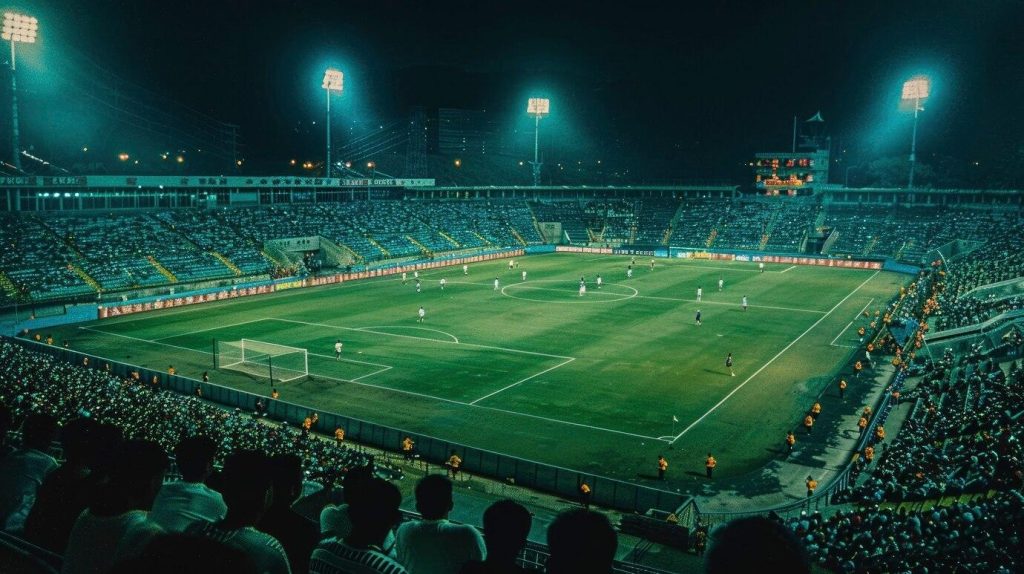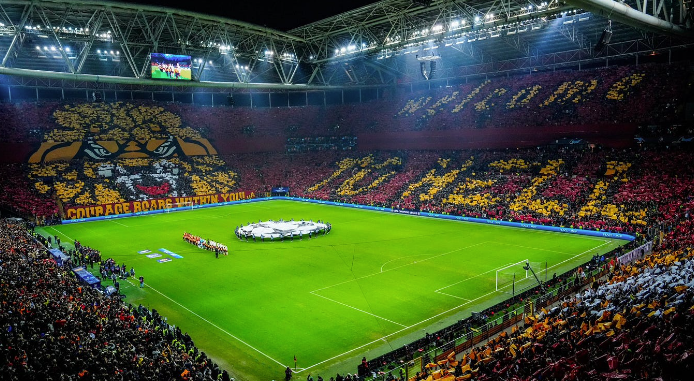Football Stadium Atmospheres: What Makes Them Special?

Football is more than just a game; it’s an experience, a passion, and a way of life for millions around the world. One of the most significant elements contributing to the sport’s magic is the electric atmosphere in the stadiums where the matches take place. For fans, attending a live match is a sensory overload, where the collective energy of thousands of people merges with the drama on the pitch to create an unforgettable experience. The passion, emotion, and energy make each stadium unique, leaving lifelong impressions on those lucky enough to be part of it.
For those who can’t attend live games in person, there’s still a way to soak in the excitement of football. You can watch live football matches on Xoilac TV, a platform that brings the best football experiences right to your screen.
The Role of Fans in Creating Atmosphere
Fans are the heartbeat of any football stadium. Their passion and devotion create an atmosphere that elevates the game from a simple sporting event to a celebration of community, competition, and identity. In many ways, fans turn the stadium into a second home, a place where they feel connected not just to their favorite team, but to the thousands of others who share their love for the game.
The chants, songs, and synchronized movements of fans play a massive role in shaping a stadium’s energy. In places like Liverpool’s Anfield, the sound of the crowd singing “You’ll Never Walk Alone” has become synonymous with football itself. These moments of unity between fans can have a profound effect on the players, pushing them to perform at their highest level while creating a memory that resonates with every person in the stadium.
Beyond chants, banners, flags, and even choreography have become integral to the identity of many football stadiums. Ultras, the most passionate groups of supporters, often lead the way in these organized displays of support, transforming entire stands into vibrant spectacles of color and energy. This level of fan engagement creates a bond between the team and its supporters, giving players a psychological edge and fans a sense of belonging.
Historic and Iconic Stadiums
Certain stadiums are steeped in history and tradition, contributing to their status as hallowed grounds of football. These stadiums become more than just a venue for sporting events; they are cultural landmarks and pilgrimage sites for fans. Iconic stadiums like the Santiago Bernabéu, Old Trafford, and Camp Nou are not only known for their massive capacities but also for the intense atmospheres they create.
Take for instance, Argentina’s La Bombonera, home to Boca Juniors. Known for its steep stands and acoustics, it’s often described as a stadium that feels like it’s physically shaking due to the sheer force of the crowd’s noise. Similarly, Borussia Dortmund’s Signal Iduna Park is famed for “The Yellow Wall,” a single-tier stand that houses over 25,000 fans in a sea of yellow and black. The visual impact of this mass of supporters is as intimidating for opposing teams as it is inspiring for Dortmund players.
These stadiums often reflect the identity of the city and the fans that inhabit them. The architecture, the layout, and even the location of these grounds are often intertwined with the cultural and historical fabric of their communities. In these spaces, history has been made—legendary goals scored, unforgettable comebacks staged, and heroic performances etched into the memory of millions.

Local Traditions and Customs
Every football stadium has its own set of customs and traditions that make the experience unique. In certain countries, these traditions take on a life of their own, adding layers to the atmosphere and making attending a match not just an event but a ritual.
In South America, the football atmosphere is fiery and often fueled by intense rivalries. Argentina and Brazil, in particular, are known for their passionate fanbases, with local derbies like the Superclásico between Boca Juniors and River Plate turning stadiums into cauldrons of noise, color, and emotion. In Europe, the rivalry between Celtic and Rangers in Scotland’s Old Firm matches brings religious and cultural tensions to the fore, making for an atmosphere that is as emotionally charged as it is captivating.
These traditions can be deeply personal, with generations of families attending matches together, passing down songs, chants, and match-day rituals. The atmosphere in the stadium becomes an extension of the local culture, giving each game its own distinct flavor. Whether it’s flares lighting up the night sky in a Turkish derby or scarves raised high during an English cup final, these customs enrich the overall experience for fans.
The Impact of Architecture on Atmosphere
The design and architecture of a football stadium can greatly influence the atmosphere within it. The proximity of the stands to the pitch, the height and steepness of the terraces, and even the materials used in construction all play a role in how sound travels and how fans interact with the game.
One of the most famous examples of stadium architecture enhancing the atmosphere is England’s Wembley Stadium. Its iconic arch and bowl shape help to amplify the sound, creating a wall of noise that can intimidate visiting teams. Similarly, Juventus Stadium in Italy was specifically designed with steep stands and a close pitch to enhance the fan experience and create a fortress-like feeling for home matches.
Smaller stadiums, though often lacking the grandeur of their larger counterparts, can still produce electric atmospheres due to the intimate nature of the design. When the fans are practically on top of the action, as is the case in stadiums like Fulham’s Craven Cottage or the old White Hart Lane, the atmosphere can feel even more intense.
The Emotional Connection Between Fans and Stadiums
For many fans, a stadium represents more than just a place to watch their team play—it’s a space where memories are made and emotions run high. These grounds become entwined with the personal history of the supporters, who may have attended matches for decades, experiencing the highs and lows alongside their team.
Winning and losing in a football stadium feels different than anywhere else. The collective joy of a last-minute goal or the shared agony of a devastating defeat can forge a bond between fans that lasts a lifetime. These moments become imprinted in the hearts and minds of the supporters, making the stadium a sacred place, one where emotions run deeper than just the result on the scoreboard.
For example, clubs like West Ham United, who moved from their historic home at Upton Park to the Olympic Stadium, have struggled to replicate the same sense of belonging. For many fans, the old ground holds cherished memories, and no amount of modern conveniences or seating capacity can replace the emotional attachment to the old stadium.

Conclusion
Football stadium atmospheres are special because they represent the essence of the game: passion, emotion, and community. Each stadium has its unique charm, shaped by its architecture, the traditions of the fans, and the history of the club it hosts. The energy created in these arenas transcends the match itself, turning it into an event that stirs the soul and unites people from all walks of life.
Whether you’re sitting in the stands at Anfield, singing in the Yellow Wall at Dortmund, or catching the game from the comfort of your home, these stadium atmospheres make football the global phenomenon that it is. For those looking to experience the magic from wherever they are, you can watch live football matches on Xôi lạc TV, where the energy of the game comes to life no matter where you are.